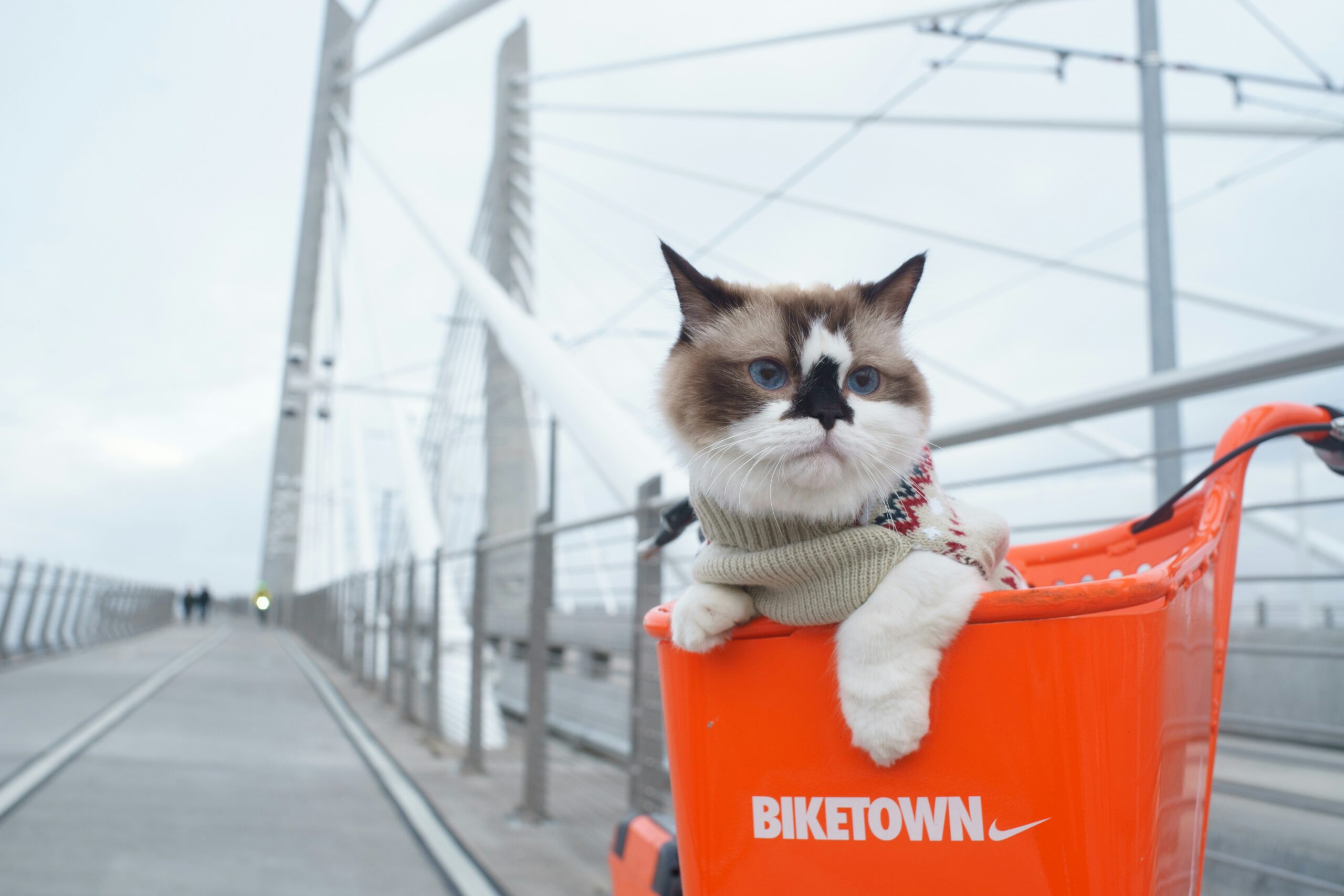Rabies poses a serious threat to our feline friends, making it essential for cat owners to recognize the symptoms in cats promptly. Understanding these signs can significantly impact your cat’s health and your peace of mind. Early detection of rabies symptoms enables you to act quickly and seek veterinary care, which is crucial for effective intervention. In this blog post, we will explore the common and behavioral symptoms of rabies in cats, as well as preventive measures to ensure your pet remains safe from this deadly virus.
Understanding Rabies: An Overview for Cat Owners
Rabies is a serious viral disease affecting mammals, including cats. It’s crucial for cat owners to understand this condition, as it poses significant risks not just to cats, but also to humans and other animals.
Here are key points about rabies:
Transmission: Rabies spreads primarily through the bite of an infected animal. The virus can enter the bloodstream, leading to severe neurological damage.
Incubation Period: Symptoms in cats usually develop within 1 to 3 months after exposure. However, this period can vary.
Fatal After Symptoms Appear: Once symptoms in cats manifest, the disease is almost always fatal.
Signs of Infection: Early signs may include subtle behavioral changes, but they can escalate quickly to severe symptoms.
Understanding these elements can help you recognize potential symptoms in cats and take swift action if needed. Keeping your cat’s vaccination up-to-date is your best defense against rabies, ensuring both their health and the safety of those around them.
Common Symptoms of Rabies in Cats
Recognizing symptoms in cats is crucial for the health and safety of your feline friend. Rabies, a deadly viral disease, exhibits various signs that can vary from subtle behavioral shifts to alarming physical changes. Here are the most common symptoms to look for:
Behavioral Changes:
- Increased aggression or irritability
- Sudden withdrawal or isolation from family members
- Uncharacteristic fearfulness or anxiety
Physical Symptoms:
- Loss of appetite and excessive drooling
- Difficulty swallowing or signs of paralysis
- Seizures or convulsions, which can indicate severe progression
| Symptoms | Behavioral Changes | Physical Symptoms |
|---|---|---|
| Increased aggression | YES | NO |
| Withdrawn behavior | YES | NO |
| Excessive drooling | NO | YES |
| Difficulty swallowing | NO | YES |
Understanding these symptoms in cats can lead to timely veterinary intervention. It is vital to monitor your cat closely, especially if they have been exposed to a potentially rabid animal. If you suspect your cat may exhibit any of these symptoms, contact your veterinarian immediately. Early recognition can save lives.
Behavioral Changes to Watch For
Recognizing symptoms in cats related to rabies can be crucial for early intervention. Behavioral changes often present some of the first indications that a cat may be infected. Here are key behavioral signs to monitor:
- Increased Aggression: A normally friendly cat may suddenly become irritable or aggressive, responding violently to touch or approach.
- Unusual Vocalization: Look for changes in meowing patterns; an infected cat might vocalize more loudly or frequently than usual.
- Isolation: If your cat starts to avoid interaction with people or other pets, this can signal distress.
- Disorientation: Rabies can cause confusion, resulting in wandering aimlessly or appearing lost in familiar surroundings.
- Hyperactivity or Restlessness: An affected cat may exhibit excessive energy or seem unable to relax.
It’s essential to observe these symptoms in cats closely, as catching rabies in its early stages significantly improves outcomes. If you notice any of these changes, contact your veterinarian immediately for guidance and support.
Physical Symptoms of Rabies in Cats
Recognizing the physical symptoms of rabies in cats can be crucial for prompt treatment and care. While the initial stages may go unnoticed, several key indicators emerge as the disease progresses. Here’s what to look for:
- Fever: Elevated body temperature often signals an underlying issue.
- Weakness or paralysis: Noticeable lethargy or difficulty moving can indicate severe neurological impact.
- Excessive salivation: Rabid cats may drool profusely due to difficulty swallowing.
- Change in vocalization: Some cats may produce unusual sounds or become silent.
- Pupillary changes: Dilated or constricted pupils may occur, reflecting neurological distress.
| Symptom | Description |
|---|---|
| Fever | Elevated body temperature |
| Weakness/Paralysis | Lethargy or difficulty with mobility |
| Excessive Salivation | Uncontrolled drooling |
| Vocalization Changes | Unusual sounds or silence |
| Pupils | Dilated or constricted |
These symptoms in cats should not be ignored. If your cat displays any of these signs, seek veterinary care immediately, as timely intervention is key to managing rabies and ensuring your pet’s well-being.
The Importance of Rabies Vaccination
Rabies is a deadly viral disease that affects the nervous system of mammals, including cats. As a cat owner, understanding the symptoms in cats is crucial, but prevention through vaccination is even more vital. Here’s why rabies vaccination should be a priority:
- Legal Requirement: Many regions mandate rabies vaccinations for pets, helping to protect public health.
- Life-Saving: Vaccinated cats are far less likely to contract rabies, as the vaccine provides excellent immunity against the virus.
- Prevents Transmission: Vaccination helps prevent cats from spreading rabies to other animals and humans, reducing health risks in your community.
- Cost-Effective: The cost of vaccinating your cat far outweighs potential medical expenses related to rabies treatment.
Quick Comparison of Vaccination Benefits:
| Benefit | Unvaccinated Cats | Vaccinated Cats |
|---|---|---|
| Risk of Rabies | High | Low |
| Cost of Treatment | Expensive & Extensive | Routine vaccination cost |
| Legal Implications | Potential fines | Compliant |
In summary, understanding the symptoms in cats when rabies strikes is essential, but prioritizing rabies vaccination is the key to prevention and safety for both your feline friend and those around them.
How Rabies is Transmitted to Cats
Understanding how rabies is transmitted to cats is crucial for every cat owner. This deadly virus spreads primarily through bite wounds from infected animals. Here are the main transmission routes:
Bite from an Infected Animal: The most common method of transmission. Rabies virus spread through saliva when an infected animal bites.
Scratch from an Infected Animal: Although less common, transmission can occur through scratches if the saliva of an infected animal enters the wound.
Contact with Open Wounds: If a cat comes into contact with saliva from an infected animal on an open wound, there is a risk of transmission.
Contaminated Environment: Rarely, a cat may become infected through contact with an environment where the rabies virus is present, such as areas with infected wildlife.
To prevent these symptoms in cats, ensure your feline is vaccinated and avoid exposure to wild or stray animals. Always monitor your cat during outdoor activities and maintain reflection of proper vaccinations. Keeping your beloved pet safe not only protects them but also mitigates the risk of rabies spreading in the community.
What to Do If You Suspect Rabies in Your Cat
If you suspect that your cat may be exhibiting symptoms of rabies, immediate action is crucial. Rabies is a serious and often fatal viral disease, so addressing potential symptoms in cats promptly can be a life-saving decision. Here’s a clear action plan:
Stay Calm: While your concern is valid, panicking won’t help your cat. Approach the situation logically.
Isolate Your Cat: Keep your cat away from other pets and humans to prevent potential transmission.
Observe Symptoms: Take note of any physical or behavioral changes such as:
- Aggression
- Unusual lethargy
- Excessive drooling
- Sensitivity to light or sound
Contact a Veterinarian: Reach out to your vet immediately. Provide detailed information about the symptoms in cats.
Follow Professional Advice: Your veterinarian may recommend bringing your cat in for evaluation or may guide you on how to mitigate any risks.
Vaccination Records: Have your cat’s vaccination history ready, as this will help the vet assess the situation better.
Following these steps ensures you handle the situation effectively and prioritize your cat’s health.
The Role of Veterinary Care in Rabies Management
Veterinary care plays a crucial role in effectively managing symptoms in cats associated with rabies. Swift and appropriate intervention can significantly impact your cat’s well-being. Here’s how veterinary professionals contribute:
- Diagnosis: Vets conduct thorough evaluations to confirm the presence of rabies by assessing clinical signs and history.
- Vaccination: Administering the rabies vaccine is key to prevention; routine vaccinations keep cats protected from potential exposure.
- Symptomatic Treatment: While no cure exists for rabies, veterinarians can manage symptoms in cats using supportive care to alleviate discomfort.
- Monitoring: Post-vaccination, vets closely monitor any adverse reactions or changes in behavior.
Comparison of Veterinary Care Responses
| Action | Before Exposure | Post-Exposure |
|---|---|---|
| Vaccination | Routine vaccinations | Emergency vaccinations (if eligible) |
| Observation | Regular check-ups | Immediate assessment of symptoms in cats |
| Treatment | Preventative measures | Supportive care for crisis management |
In summary, proactive veterinary care is essential in both preventing and managing symptoms in cats related to rabies. Always consult your veterinarian for guidance tailored to your cat’s specific needs.
Preventative Measures for Cat Owners
As a responsible cat owner, taking proactive steps to prevent rabies can safeguard your feline friend against potential exposure. Here are essential preventative measures to consider:
Vaccination: Ensure your cat receives the rabies vaccine. Regular vaccinations play a crucial role in preventing the symptoms in cats associated with rabies.
Keep Your Cat Indoors: Limiting your cat’s access to the outdoors reduces the risk of encounters with wild animals that may carry rabies.
Supervise Outdoor Time: If you allow outdoor access, supervise your cat and ensure it stays in a secure, enclosed area.
Avoid Wild Animals: Teach your cat to steer clear of wild animals. If you notice signs of wild animals in your vicinity, such as raccoons or bats, take precautions.
Regular Veterinary Check-ups: Schedule annual veterinary visits to monitor your cat’s health and stay updated on vaccinations.
By following these measures, you can significantly lower the risk of symptoms in cats stemming from rabies, thereby ensuring a safer environment for your beloved pet.
Conclusion: Keeping Your Cat Safe from Rabies
Keeping your cat safe from rabies involves proactive measures and awareness of Symptoms in Cats. As a cat owner, it’s crucial to prioritize preventive strategies to shield your furry friend from potential dangers. Here are key points to consider:
- Vaccination: Ensure your cat receives the rabies vaccine on schedule. This is the most effective way to protect against rabies.
- Awareness: Familiarize yourself with common Symptoms in Cats, which include behavioral changes, aggression, hallucinations, or paralysis.
- Regular Vet Visits: Schedule annual check-ups. Your veterinarian can help track your cat’s health and vaccination status.
- Safe Environments: Keep your cat indoors where possible. Outdoor cats face higher risks from wildlife that may carry rabies.
In conclusion, knowledge and vigilance are essential. By being informed about both rabies Symptoms in Cats and preventive measures, you protect not only your pet but also safeguard your household and the community.



